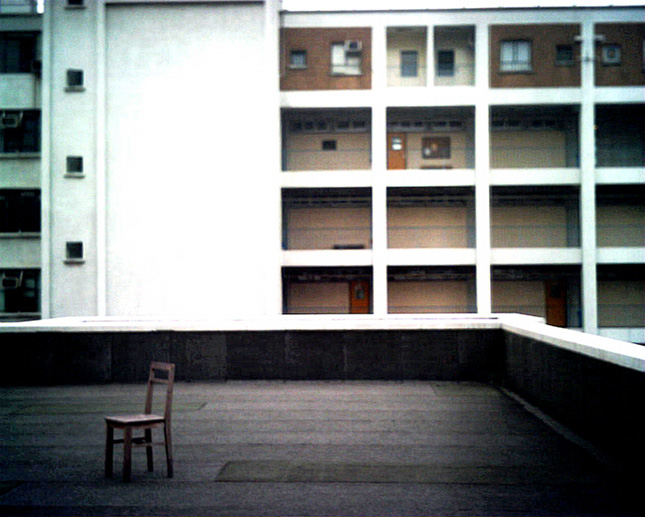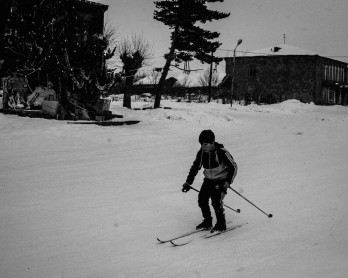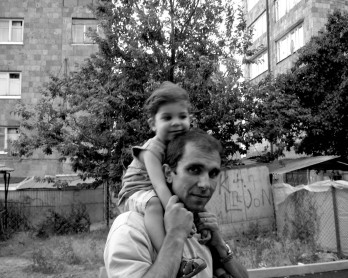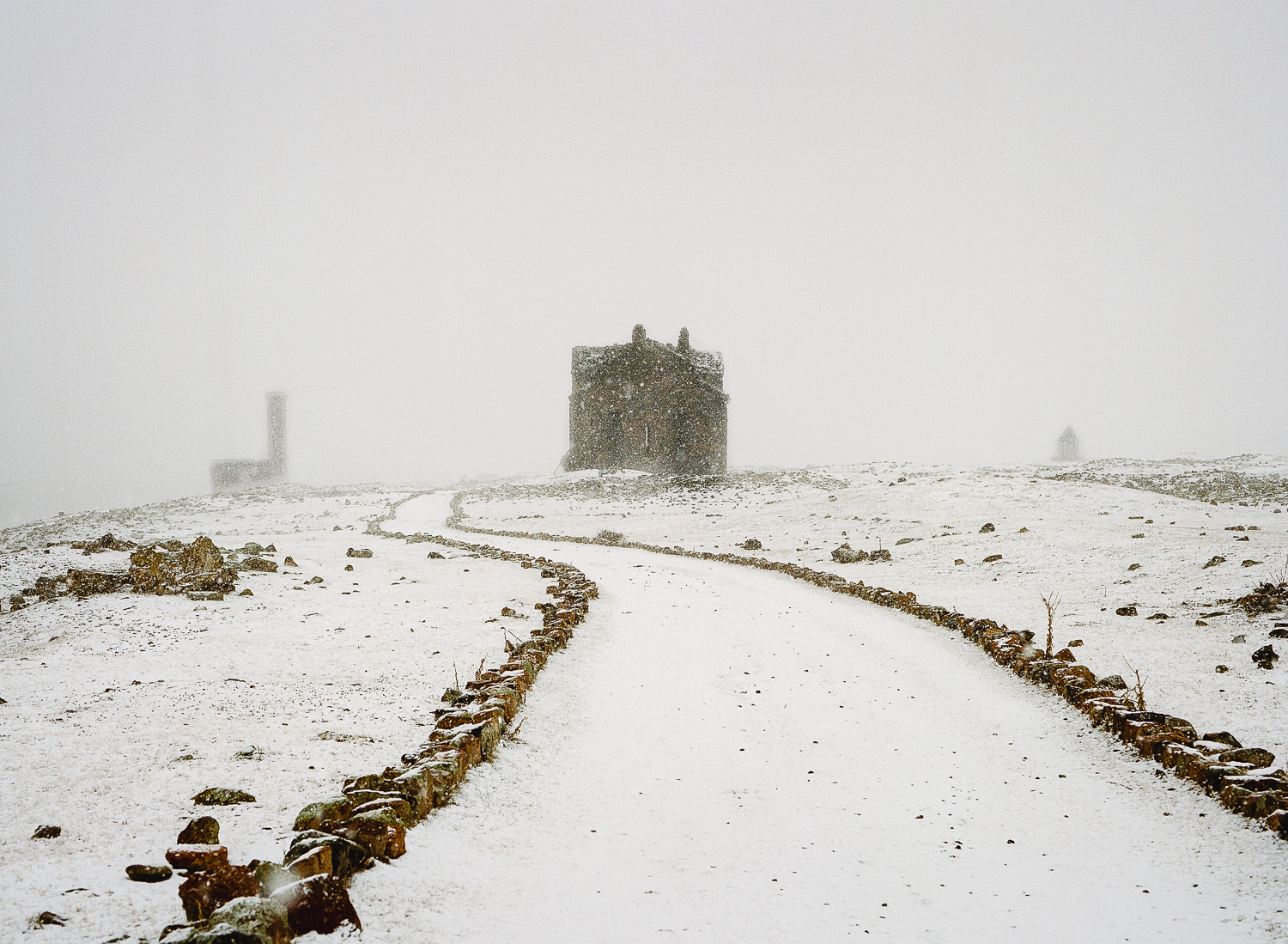Beige: Know What the Answer is, Chavoor?
I have done stuff to stir the kids up before. Stuff that has made them say, “Mr. Chavoor, you can’t say that.” The first time I did it was in 1986 with 10th graders. I told them it was a just a true false test but the statements were racist stereotypes. True or False: Black people are better dancers and athletes than white people. Almost all of them marked true without comment, but I finally got some objections—not unanimous though—when the statement said that black people were not good academically because on average their brains were smaller. There had been a resurgence of racist notions in the 1980’s and I was getting them ready to read To Kill a Mockingbird; it seemed like the logical thing to do.
“Mr. Chavoor this is wrong,” a Mexican-American girl in the back said.
“What number?”
“All of it. It’s not right.”
“Why not? You know the answers don’t you?”
“Yeah but…” she seemed stuck or she was afraid, “You shouldn’t ask these kinds of questions.”
“I shouldn’t?”
“No.”
“You know the answers though. What does that tell you?”
“I don’t know but this isn’t right, what you’re doing.”
“Why?”
“It’s racial.”
“It’s racist. That’s right. Why would I have the class take a racist True False Test?”
She went silent and the other students while sympathetic did not comment. I knew I was on thin ice. I could feel that one of them might complain either to a parent or an administrator, which would complicate things..
“Dee-dee’s right. The survey is wrong. It is not something I or any teacher should have you do,” I said in an authoritative voice.
“Then why’d you do it?” A quiet kid named Ruben asked.
“I would venture to say that you never heard any teacher talk racist stuff,” I said.
“I did.” Hector called out. “It was a math teacher. A sub.”
“He might have made racist comments, but…”
“He talked shit on Mexicans. He said we’re short because we only eat rice and beans.”
“Well we are and we eat rice and beans.”
“Not my cousin. He’s like allergic to beans.”
“It ain’t no Mexicans allergic to beans.”
“Hold on a minute,” I said, “there’s no scientific evidence to suggest that one thing is related to another.”
“Still though, Chavoor.”“Still nothing. That sub made a racist comment. But I want to know what stereotypes are.”
“Like when you’re racial?” Dee-dee ventured.
“Well, it’s like one of those things where everybody knows what they think is true but nobody knows who decided it was true.”
“What are you talking about?”
“Yeah, I don’t get it.”
“Jocks are dumb. Girls are weak.”
“Yeah?”
“Whuddya mean Yeah?”
A class discussion took off from there and when we were done, they knew what stereotypes were, although they weren’t entirely sure which tidbits of general knowledge where in fact stereotypes. They were ready to read To Kill a Mockingbird though.
It was the last time I used the True False stereotypes survey though. It was too risky, especially when I could kick things off just as easily by announcing something like, “Cheerleaders are airheads.” I originally got the idea from a class I took at Azusa Pacific where on the first day of class the instructor staged a hostile confrontation with a student who was in on the deal. Just when it seemed that things would get very ugly, he broke character and asked us at what point we were going to speak up and rebuke him. The lesson was that we, the people, give permission to corrupt authority figures to retain and abuse their power. It was most definitely a post-Watergate era lesson.
I don’t know where I got the idea of telling my students about April 24, Martyr’s Day; it just seemed like something they would want to know about. It was a history that was off the main trail, something that was known to those who know there is a less renowned or alternative history. It’s the stuff they don’t tell you about. It’s not that it doesn’t exist, it just never gets mentioned. In all 13 years of my public education there were pilgrims and Indians and Europeans and cowboys and mission building Spaniards and slaves and then emancipated slaves but there was no mention of the Armenians and their suffering, persecution, struggles, triumphs and contributions to society. I had the feeling that my students—Mexican-American, African-American, and Asian-Americans—would be able to connect to a history that was or had been undervalued.
My grandmothers and great-aunts and uncles never mentioned their own history. My parents never said very much about it. All I knew is what I saw, and for the most part is was that Armenians are a passionate, amiable bunch. We range anywhere from high-strung to morose, but we know how to get along with others, and not just get along; we know about kef, fun, good times; every gathering was a celebration. I had no idea that anyone could hate the Armenian people enough to want to kill them.
In college I went through a Armenian Genocide stage where I read the horrifying accounts of the rape, torture and murder of men, women and children. I read the accounts of Ambassador Morgenthau. I read Neither to Laugh nor to Weep. I read about my people using dirt and water for the communion elements, then singing “God be with you ‘til we Meet Again”, then facing their tormentors saying that they were ready to suffer and die for their faith. I wanted to read everything about the genocide and my people, and then I wanted to tell everyone everything I knew.
I began to see Christ’s words about the truth making us free in an expanded way, that if I knew this truth, I—and anyone who knew this truth—would be free from its power to cripple the succeeding generations of the survivors. Our life, after all, is not much more than a response to whatever happened before we got there. The babyboomer generation aspired to big things, good, bold things because the generation before had left us a safe, unthreatened, prosperous but still flawed system. But how could succeeding Armenian generations respond to the genocide? That endless loop of a message: You’re worthless. Stripping you of power isn’t enough. Your culture, history and religion are an affront to us. You deserve humiliation, torture and death.
“The world breaks everyone,” Hemingway tells us, “and afterward many are strong in the broken places.” And so for those the genocide did not kill—literally or figuratively—it made stronger. We sought redemption and salvation anywhere we thought it might be had, in education, business, politics, religion, and the arts. Our adopted countries were strong and safe. We made one of the greatest comebacks in the 20th century. In just two generations we went from surviving to thriving. We went from assembly line workers, short order cooks and fruit peddlers to pilots, administrators and accountants. We bought nice cars, bought two story houses in good neighborhoods, and had two or three children. Barbecue, banquets and simple gatherings of two or more of us was a celebration all right, a victory party, an affirmation of coming full circle and never going back. There was always that scar tissue though, and that floating question mark in our soul, but we didn’t mind; we just sang our hymns louder and worked harder.
So it came to me that I owed it to the ancestors to share this piece of buried history with my students, at least one day out of our 180 days together. I kept it short—never more than 20 minutes—and I didn’t do it every year. My feelings about it would change from year to year. Sometimes I would feel like it was a private matter and couldn’t imagine how I had done it before. Other times I would simply forget, and the 24th day of April would come and go. In the mid 90’s I put the lesson on hiatus; I didn’t feel it anymore, wasn’t in the mood, I didn’t see the point anymore. The genocide had become something that didn’t do any more than simply happen, and knowing or not knowing about it wasn’t going to change anything. I just didn’t want it around anymore, I was tired; it had begun to feel like an asterisk on my existence. Then I brought it back, without really knowing why. At first I hit the kids hard; I found the harshest of articles on the internet and included the pictures of stacks of stripped, emaciated corpses. The students gasped and spoke to me in very solemn tones. I did that for two years and let it go.
Martyr’s Day of 2009 wasn’t even on my mind. On the 24th of April we had a department meeting from 7:30 to 8:30 in the morning. Classes didn’t start until 9 o’clock. I got to school a little after 7, went to my room and waited to see if I would talk myself into or out of going to the meeting. There were two meetings a week and the leaders faithfully crammed 15 minutes of information into 60 minutes. Sitting there listening to nice people with good intentions field questions from other nice people with good intentions and offer answers that amounted to blah-blah, blah-blah-blah was not something I looked forward to. I am not wired for meetings, be they productive and meaningful or not. Maybe Bob Dylan had just left a meeting when he penned the lyrics to “Too much of Nothing.” I do think of myself as a team player; the problem is that over the years the team changed, the game plan changed and the rules changed.
I turned on the computer and opened Microsoft Word. Maybe if I was using the time for the benefit of the students I could feel ok about not going. I had gone to most of the meetings and for the most part I did not leave the meetings feeling as though something positive was accomplished. I typed the date, looked at it and the idea came.
April 24, 2009
In order to promote peace and safety between Mexican-Americans and Anglo-Americans, the United States Government hereby decrees that any and all Mexican-American citizens living in Fresno County will be relocated to their own territory on government assigned lands, 70 miles outside of Las Vegas, Nevada. “Mexican-American” will be defined as anyone of at least 25% Mexican descent. This definition will include any and all “Native Americans.” Deportation to Mexican-American Territory will be in effect today, April 24, 2009.
For the purposes of safety and convenience of the deportees, the United States Army and National Guard will escort designated families to government assigned areas. Any properties of deportees will be forfeited to the United States Government. Any trucks, automobiles, motorcycles, off-road vehicles or boats in ownership of the detainees will be forfeited to the United States Government. Any item worth more than $500 will be forfeited to the United States Government. Businesses, properties, and churches owned by detainees will be forfeited to the United States Government.
Resistance to relocation will not be tolerated. Elderly, infirm and infants will not be exempt. Deportees will not be allowed to ship belongings to government assigned territory. Deportees will only be allowed to take what they can carry.
Mexican-Americans living in Kern County were successfully relocated last month. Rumors of their demise are false. There have been no mass killings; only an unfortunate few who attempted armed insurrection. The United States Army considered such actions an act of civil war. Most Kern County citizens were cooperative and expressed gratitude for their new government assignment territory.
None of this is true, of course. But it did happen to Armenians living in Turkey in 1915. The Armenian people lost their homes, churches, businesses and ancestral land. They were marched to the desert where instead of being relocated; 2 million of them were massacred by the Turks. The date, April 24, is remembered by Armenians around the world to this very day. We forgive but we will never forget.
I wrote it in a straight 20 minute burst, printed it out and got up and went directly to the main office to make a class set. It looked good, it sounded good but I wasn’t sure that there wouldn’t be some kind of blowback. The kids would either get it or get stuck on the racist edict directed at over half of every class, and even it just one kid took offense, there could be problems if that one kid went to an administrator. One of the new game rules was that one unidentified student in every class might belong to a committee that met with the principal on a regular basis for the purpose of describing the proceedings of the classes the students of the committee attended. That didn’t bother me as much as annoy me. But kids who weren’t on a committee, who might take offense, those were the kids I worried about.
I bought myself a diet Pepsi in the Xerox room, hoping a colleague might wander in who wouldn’t mind reading the essay and offering an opinion. I considered who I might seek out. A secretary? A counselor? I drifted down the hall that held most of the counselors. I had taken to drinking diet Pepsi in the morning, telling myself it was the same as coffee. In the old days, I would get my cup of coffee from Mike Heinz, but Mike was retired now. What would Mike have said about my little stunt? He’d probably say Yeah man, what the heck. Go for it. Stir ‘em up a little. It ain’t gonna kill ‘em. Or maybe he wouldn’t. Maybe he’d say I don’t know, Jack. This could backfire on you. I walked past doors that held new counselors or relatively new counselors that I didn’t really know yet. Finally I came to Maribel Trevino’s office. She was still new to me but the fact that I knew her name and had dealt with her about kids and felt she was reasonable made her not new anymore.
She read the article and said she thought it had merit and was not unreasonable.
I had one more person I wanted to check the paper and as if she were reading my mind, Paula Fansler walked into the main office. Paula is one of the smartest, most effective teachers I have ever known. I gave her a copy of the paper and asked her to email me her comments. I didn’t hear from her until after the first class of the day but I went with it anyway.
I read it to them and they were quiet, which was unusual for that loud, boisterous class. I knew they were feeling things so I told them they had to write a response.
“What do you mean, a response?”
“Well, what would you do? Stay and fight or go live in the desert? How would you feel?”
“Real talk, Mr. Chavoor, I’d just go to Mexico and live over there with my grandma.”
“Yeah, me too.”
“That’d be like everybody, Mr. Chavoor.”
“Not me! I’m Honduran.”
“Man, shut up, they’d snatch your skinny ass first.”
“Well, I imagine they’d seal the borders,” I said.
“Hell, Chavoor, first they keep us out, then they keep us in!”
“Well I wouldn’t go back to Mexico anyway.”
“What would you do, Miguel?”
“Me? I’d fight.”
“Yeah,” Luis said, “me too.”
“Remember, you’re up against the Army,” I said.
“I’d get me some, what d’you call ‘em? Those missiles?”
“Hand held missile-launchers?
“Yeah, those. They wouldn’t mess with me then.”
“Well, I guess that covers all the options,” I said.
“Know what, Mr. Chavoor?”
“What’s that Miguel?”
“If you think about it, the same thing happened to the Mexicans.”
“What do you mean?”
“We got kicked out of our own country ‘cause California , Texas and everything was Mexico .”
“Wrong!”
“What’s wrong, Nellie?”
“ Mexico was as bad as the United States .”
“What the hell!” Miguel exclaimed. Nellie suddenly had more attention then she had received all year. Every Mexican-American kid in the room was looking at her enraged to some degree.
“Slow down, now,” I said, “explain yourself, Nellie.”
“You wanna give the country back, you gotta give it back to Native Americans, like me.” She smiled proudly.
“Oh, ok. So The Spaniards took Mexico and competed with the United States who ended up taking the southwest from Mexico .”
“Thank you,” Nellie said jubilantly.
“What’s with some people hating on Mexicans, Mr. Chavoor? Miguel said.
“Nobody’s hating,” I said, “It’s just how it was. The Europeans were having like a race to grab up other countries.”
“Like what we read in that book about that guy.”
“What guy?”
“In South Africa .”
“Kaffir Boy. That’s right.”
“Hey, Chavoor, can I ask a question?”
“What is it, Johnny?”
“No offense but what’s with white people?”
“He ain’t white!” Miguel shouted.
“Ok, look,” I said, “I’m white, I guess, although there are probably some places in the deep south where that would be contested. But it’s not always white people.”
“Yeah,” Ong said, “Vietnamese killed Hmong. That’s Asian on Asian. No white.”
“Egyptians killed Israelis. That’s Africans killing whites,” Rudy said.
“ Africa ?” Johnny said.
“ Egypt is in Africa ,” I said.
“It is?” Miguel exclaimed.
“Don’t forget Darfur ,” Nellie called out.
“What’s that?” Miguel asked.
“It’s a genocide in an African country. Something like 50,000 people have been slaughtered.”
“Know what the answer is Mr. Chavoor?” Ong asked.
“What’s the answer, Ong?”
“Beige.”
“Beige?”
“Yeah Beige. Everybody gotta think beige. Black, white, brown, yellow. Make beige.”
“He jocked that from some comedian on cable,” Rudy said. “He didn’t make that up on his own.”
“So what?” Ong said, “Still good. Beige. Right Chavoor?”
“Yeah. I like it. I like it a lot. Very cool.”
“Chavoor likes it. Everybody marry everybody else. Nobody knows anymore.”
“Not so much that. I think it’s important to know and keep your cultural identity. But what I like about it is just as a way to stop using our differences as a way to divide and hate. We’re all beige.”
“Everybody’s in the human race,” Tina said.
“Right,” I said, “So on the back of the paper write your response. How would you feel? What would you do?”“I’d still be up on my roof Chavoor, shooting those missiles,” Miguel said, and he began writing.
What they had to say varied. But it was almost an unfair assignment in as much as there has been no solution since the beginning of human existence. One group has more power than another coupled with the notion that different is wrong and next thing you know the group with power is abusing the other group. I was satisfied with the assignment; they read, they learned, they thought about what they read and learned. It might be naïve, I might be handing them rose-colored glasses, but maybe if enough people could think beige we all might be better off for it.







